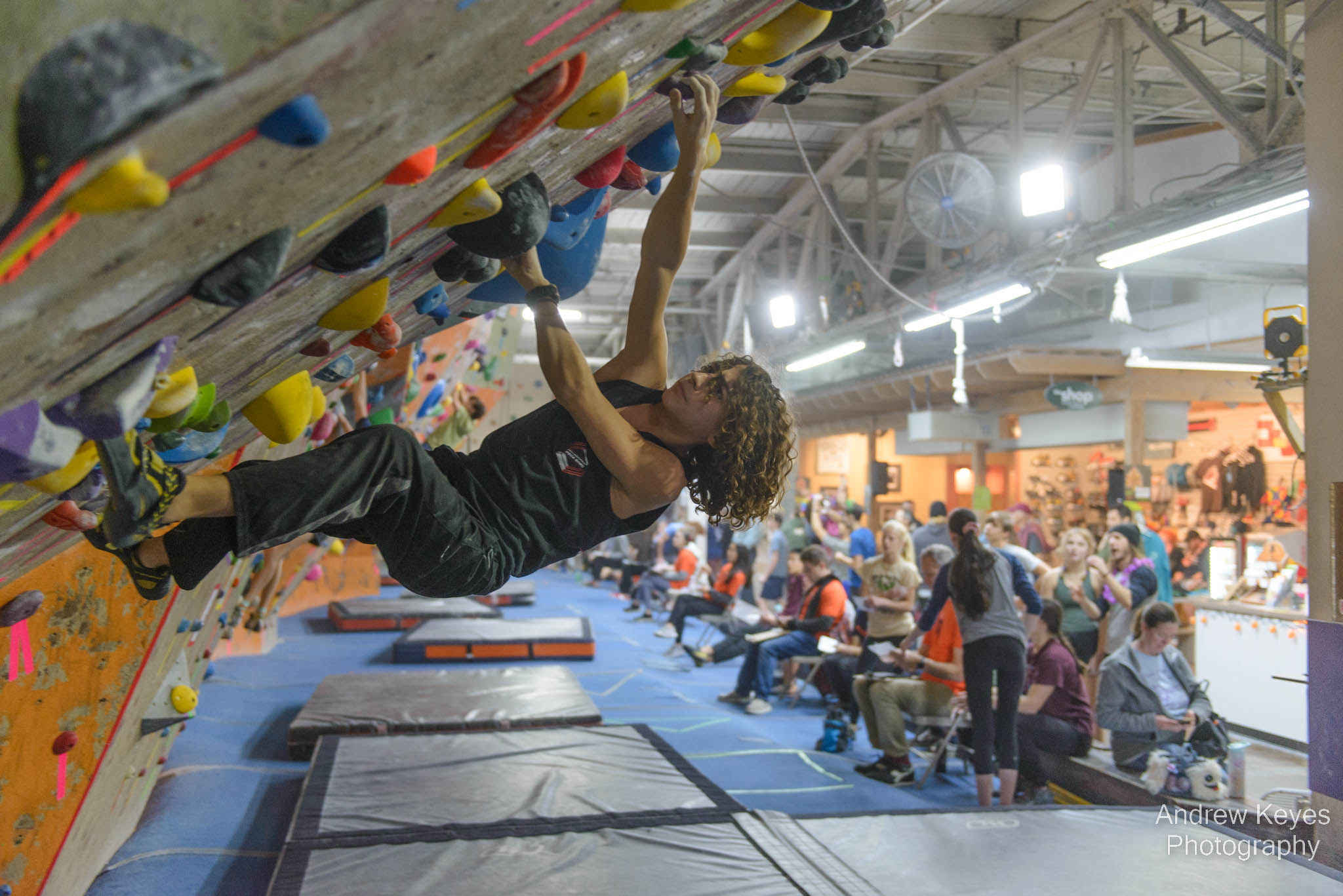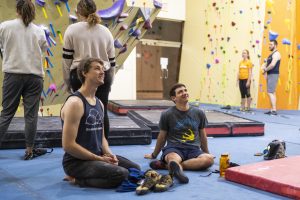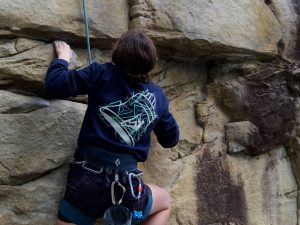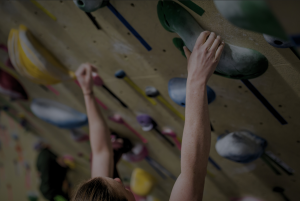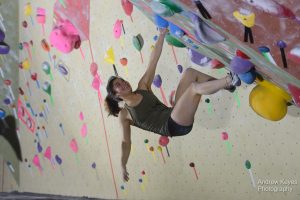Climbing steep routes (10 to 30 degrees) at higher grades requires a particular focus on applying core principles.
At these angles, as with advanced climbing, the feel of efficient positions change from lower angles. More work is being done by the arms. The tendency, therefore, is to over focus on the upper body, and ignore the core and lower body efficiency.
On these angles we have found that focusing on issues that interfere with efficient climbing, and developing the feel for that, is most instructive. Where appropriate, we will also be introducing specific skills that are more prevalent at these angles and grades than at others.
3 Lower Body Efficiencies
In the area of lower body efficiency there are a number of issues which crop up that distract climbers from truly focusing on their hips.
There are three main reasons for lower body efficiency. Some examples are bad feet, forgetting to extend the legs, and forgetting to follow through.
Bad Feet
One of the ways which route setters love to make routes harder is to use bad footholds. This tends to cause climbers to focus on using their grip to keep them on the wall, and reduce the amount of force they place on footholds.
However, it is important for climbers to remember that their feet only come off of a foothold for one reason. There is not enough weight on them.
The proper approach to a bad foot is to be excruciatingly particular about shifting your weight onto your motion point, and maintaining pressure on the foothold throughout the move.
In many cases, this requires climbers to place a seemingly excessive amount of attention onto their hips and their feet, almost to the exclusion of thinking about their hands during the majority of the move.
Climbers tend to think that the obvious thing to do when the feet are bad is to hold on harder. The real trick is to do almost the opposite. Shift (sometimes ‘wrench’ would seem a better description) your attention away from your hands and to your lower body. This ensures that you are weighting the foothold as much as possible during the entire move.
When this approach becomes automatic, you will quickly notice an increase not only in the difficulty of moves you can do, but also in the consistency with which you can do them.
Forgetting to Extend the Legs
Along similar lines as the issue above, many climbers have a tendency to actually lift their feet off of footholds near the completion of a reach. One reason for this is that our bodies do not naturally extend our legs when we pull up. This is a demonstration that you can try for yourself.
Grab a good jug that you can reach from a squatting position while standing on the floor. Once in position, quickly do a full pull up. Now look down at your feet. If you are like most people, and do the pull up quickly without thinking much about it, your legs will still be bent, and your feet will not be touching the floor.
This is because the signal to extend your legs as you pull up is not the natural reaction of your body to a pull up.
In many circumstances on the climbing wall, an analogous issue crops up. Most especially when feet are bad. Your attention tends to drift to your hands, and moves are close to full extension for your legs. If you do a big move, such as a deadpoint or short dyno, the act of latching the upper handhold (which inevitably involves some “pulling up”) will lift enough weight off of your feet to cause them to pop. This will frequently happen just as you get a good grip on the upper hold.
In order to prevent this, climbers must tell themselves to extend the leg they are pushing with in order to maintain good contact with the foothold. Learning to do this naturally and quickly is an invaluable feel especially at steeper angles.
Forgetting to Follow Through
It is debatable whether this topic falls under lower body or connecting the core. Regardless, this is a similar idea to shorting the swing. In other words not allowing your hips to travel far enough to truly settle over your motion point.
As we described in the previous articles, all dynamic movement requires a follow through with the hips, a drift which completes, in general, after you have grab your target handhold. On steeper walls, this drift is not just right or left, but inward toward the wall.
Just as it would be inefficient to stop your sideways hip movement before they reach your heel, it is equally problematic to stop your inward movement before your hips just about touch the wall. And yet, just as climbers tend to short the swing when they latch their target hold, they also tend to stop their inward movement as well. This leads to gravity having a stronger grip on your hips, which translates into more weight on your arms.
All material is reprinted with the permission of the author. Copyright 2022 David H. Rowland. All rights reserved.


